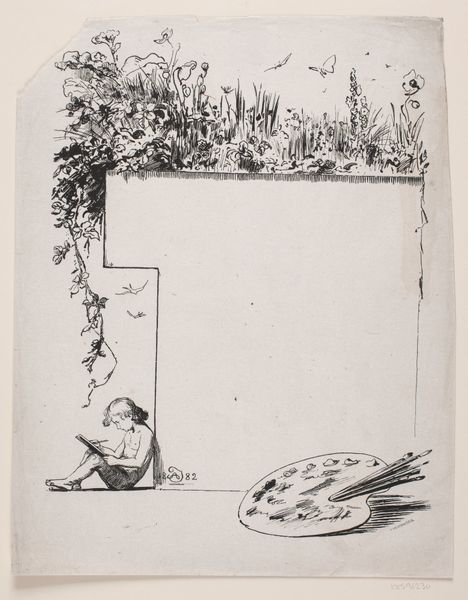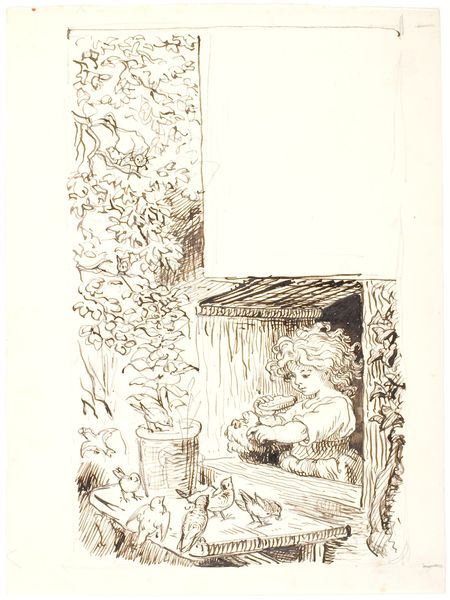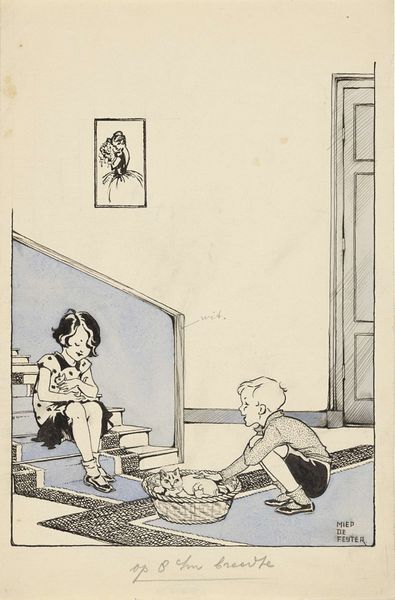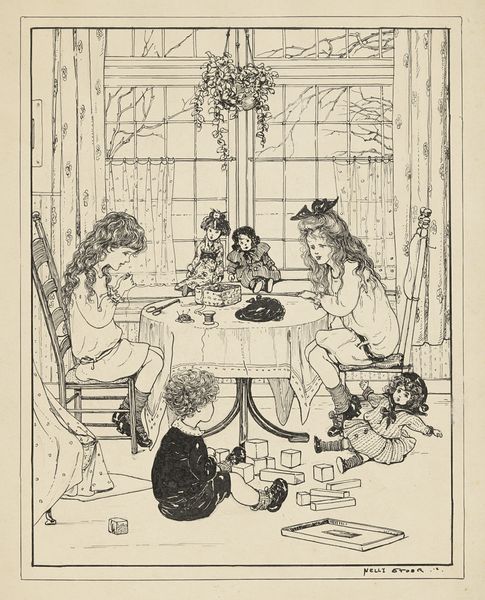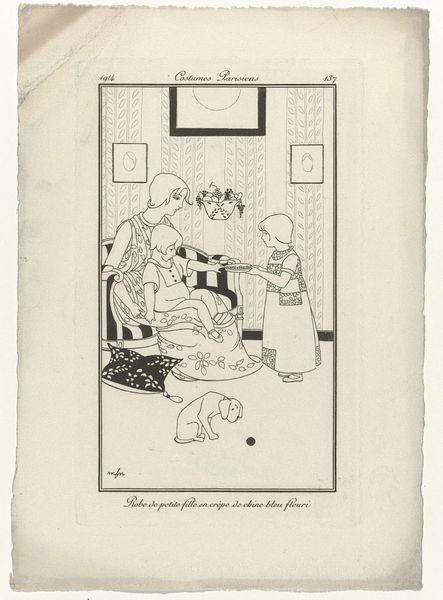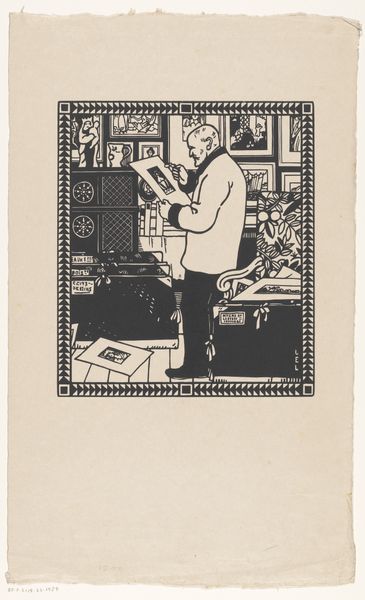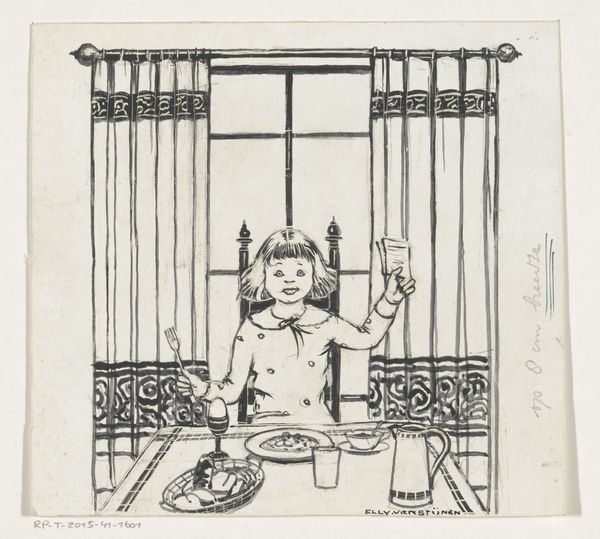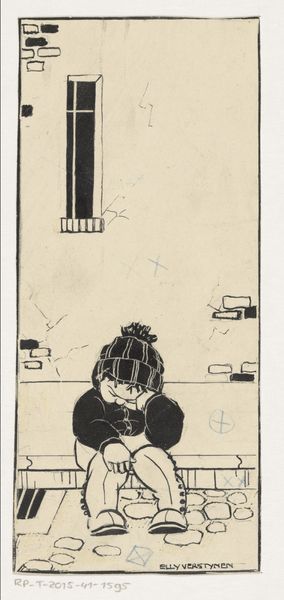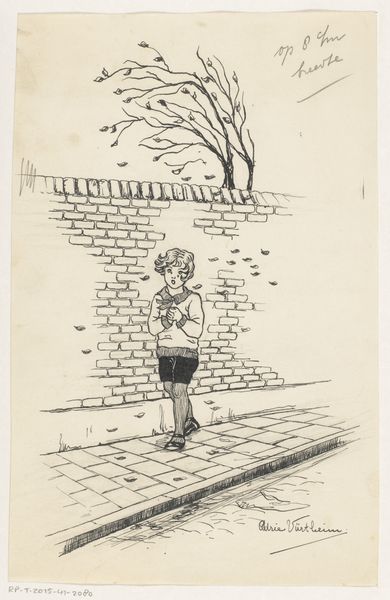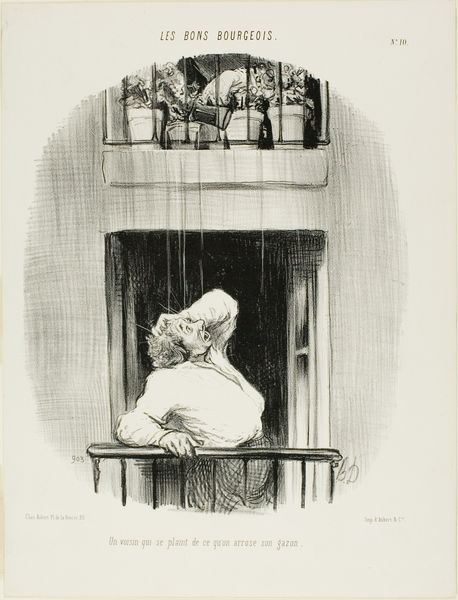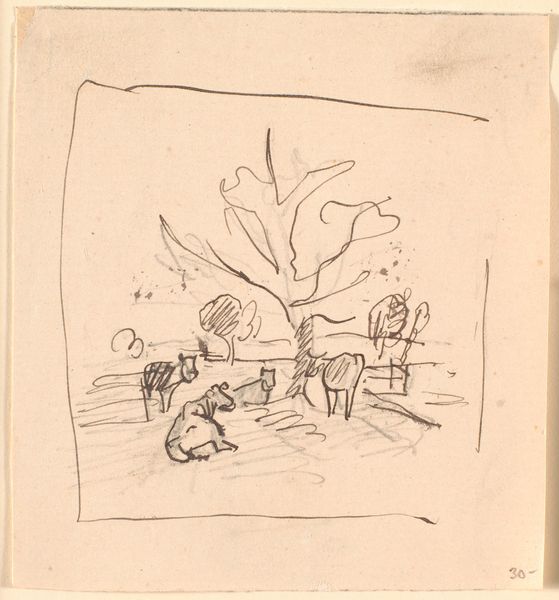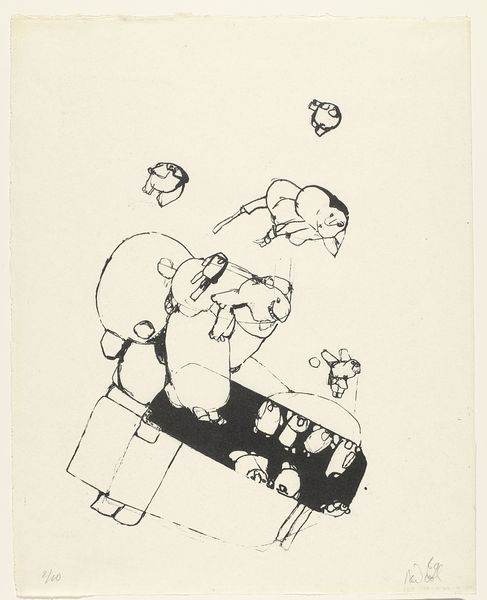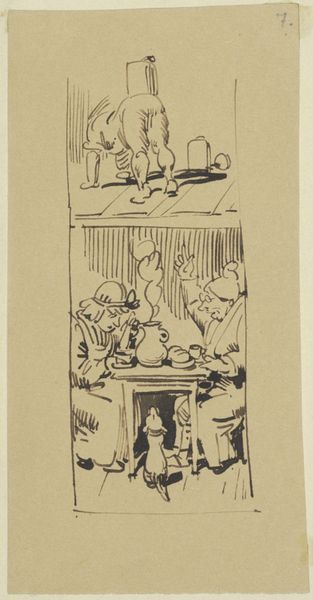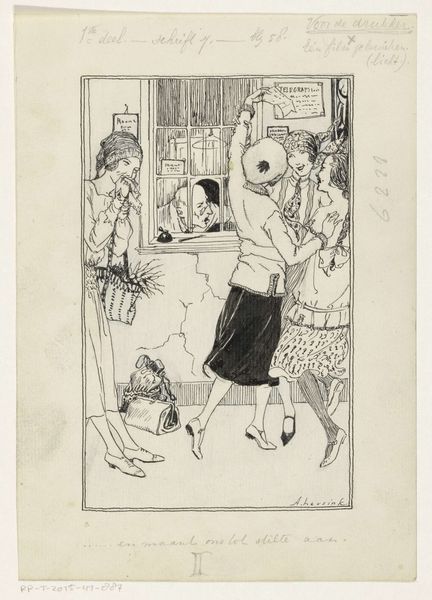
drawing, paper, ink
#
portrait
#
drawing
#
paper
#
ink
#
genre-painting
Dimensions: height 179 mm, width 153 mm
Copyright: Rijks Museum: Open Domain
Curator: Welcome. Today, we're looking at a piece by Elly Verstijnen, titled "Meisje geeft planten water", which translates to "Girl Watering Plants." It's estimated to be from somewhere between 1900 and 1930, and it’s rendered in ink on paper. Editor: It's striking. The sharp contrast of the ink creates a charming simplicity, but also evokes a slightly melancholic feeling. There's a purity to the lines, and it makes me want to decode its structure. Curator: I find that mood fascinating, especially when considering the potential role of gendered expectations of girls. Is she learning domestic skills here? Is there something subtly rebellious in confining her to this windowsill? Editor: Perhaps, but the composition is what truly engages me. Note the frame created by the window. It's so deliberate and isolates our subject within the home, or is she within the outside space of the wall mounted trough? The contrast between the precise lines of the window versus the slightly more organic shapes of the plants feels very balanced, a careful formal relationship. Curator: True, the contrast speaks to the tensions present between nature and culture, which is important in genre scenes. Also, this was the height of artistic experimentation. This image probably shows an idea of national identity linked to imagery in children's books and popular art during that period. Editor: Exactly! Semiotically, each of those potted plants also seems to symbolize new growth. The drawing also shows clear care for light and shadow. Curator: And we can ponder what that symbolism is meant to suggest during a transformative moment in Dutch society, especially regarding the education and expectations placed on young women. This simple image can contain some powerful ideas about representation! Editor: I hadn't considered it from that perspective before! Now I’m appreciating how the apparent simplicity of the style is a really conscious artistic choice for engaging on the relationship between nature and identity. Curator: Yes, precisely. A potent reminder of how artworks operate within wider contexts.
Comments
No comments
Be the first to comment and join the conversation on the ultimate creative platform.
